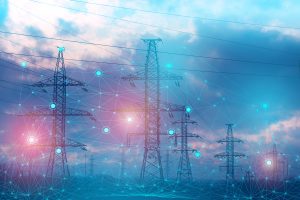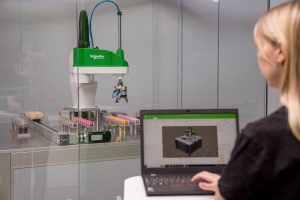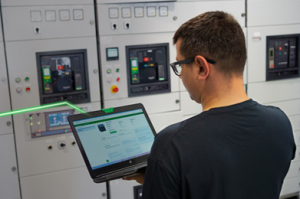
Recent advancements in industrial automation are changing how businesses handle manufacturing and process control. The rise of software-defined automation and Universal Automation is transforming the traditional industrial automation model. The old approach, which depended on closed and manufacturer-specific hardware and software, is quickly being replaced by open and flexible software-centered methods and tools. This shift means businesses are no longer limited by proprietary systems that restricted customization and adaptability.
This new model of industrial automation offers significant advantages. By separating automation hardware from software, companies can choose the platforms that best fit their unique needs and business goals. This flexibility allows faster innovation, easier scaling, and better integration of new technologies. It also assists businesses in making decisions that enhance performance and adapt more efficiently to evolving market demands.
Modern industrial automation enables companies to adjust their operations to shifting supply chains, changing customer expectations, and global challenges. Furthermore, this approach supports a smooth transition into Industry 4.0 where connected devices, data analysis, and intelligent systems become the norm. Ultimately, adopting these open and software-centered industrial automation solutions helps businesses stay competitive, efficient, and ready for the digital future.
Taking industrial automation to new heights with virtualization
The separation of hardware and software also enables new types of virtualization to be applied to the industrial space, further advancing traditional automation paradigms and increasing overall efficiency.
In the traditional IT sense, the term ‘virtualization’ is commonly used to describe a scenario where several virtual machines (VMs) are set up on a single server. When used in the context of industrial automation it has various meanings, but the premise is much the same – a move from physical to virtual.
For this purpose, we are referring to when a process that was traditionally only able to be carried out with hardware and software combined has been digitalized, leveraging the power of software to become more virtual.
Digital Twins
The introduction of digital twin modeling in software such as EcoStruxure Machine Expert Twin allows machine builders to drag and drop from a predefined catalog of objects to design, optimize, test and validate digital models of real machine solutions in a virtualized environment before commissioning. They no longer need to experiment with physical hardware to achieve optimized results. This can significantly increase efficiency by saving time to market by up to 50% and commissioning time up to 60% when compared to traditional approaches.
The benefits of soft PLCs for modern industrial operations
When it comes to the all-important programmable logic controller (PLC), virtualization enables the move to a ‘soft PLC’, such as the EcoStruxure Automation Expert virtualized controller, a hardware-agnostic, software-based PLC which can be run on any Windows or Linux server, industrial PC (iPC), or microcomputer, no matter the supplier.
Multiple instances of these virtualized controllers can be installed in the same piece of hardware and configured, deployed, and maintained simultaneously and independently from one another. It also offers the ability to make changes to the process without stopping production – minimizing downtime, reducing costs, and providing the all-important flexibility and agility required to thrive in the demand-driven, dynamic consumer landscape of today.
With features like rugged designs, extended temperature ranges, and compatibility with industrial protocols, Schneider Electric’s Harmony iPC (formerly Magelis iPC) is made to withstand the harsh conditions prevalent in manufacturing facilities. Acting as the user’s visualization and control terminal, it’s a powerful, purpose-built, industrial-ready hardware choice when it comes to running soft PLC machine & plant control systems.
Soft PLCs provide flexible and scalable control solutions that lower hardware costs, simplify updates, and improve integration to increase efficiency in modern smart industrial environments.
Reusable engineering
Then there is EcoStruxure Automation Expert’s software-centric, in-built smart design and engineering capabilities, which allow for processes or techniques to be piloted in one location and then rolled out quickly to others. Brilliant Planet, one of Schneider Electric’s customers working in the algae-based carbon capture industry, has recently been utilizing this functionality with exceptional results.
“To scale at the speed required, we need to be able to modularize our application,” said Adam Taylor, CEO at Brilliant Planet. “The Schneider Electric and Platinum Electrical Engineering solution enables us to copy, paste, and scale at each site. This means we can utilize resources more efficiently while seeing drastic improvements in control.”
Within virtualized environments, deploying new processes or replicating and modifying existing ones is much easier. This reusable engineering significantly reduces time-to-market, increases engineering efficiency, and can offer an edge over the competition.
Virtualization and software-defined automation supercharge your engineering efforts
In the ever-evolving and exceptionally competitive landscape of industrial automation, where engineers and machine builders are constantly seeking innovative ways to enhance efficiency, productivity, agility, and flexibility, harnessing the power of virtualization and embracing a software-centric way of operating is a game-changer.
As the industrial landscape continues to advance and we transition even further into the Software-Defined Automation era, these digitized, virtualized smart manufacturing environments will, no doubt, continue to set new standards in interoperability, ease and efficiency for the next generation of industrial automation.
Ready to change the game?
- IDC Perspective – Software-Defined Automation: An Update
- Dive into our interactive EcoStruxure Automation Expert demo
- Read the Brilliant Planet press release
- Watch how GEA, a German machine and plant manufacturer, used EcoStruxure Automation Expert’s to optimize their operation
- How-to Video: Install a virtualized controller HA in EcoStruxure Automation Expert v23.0




Add a comment